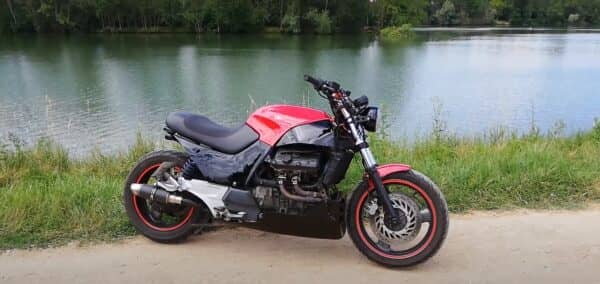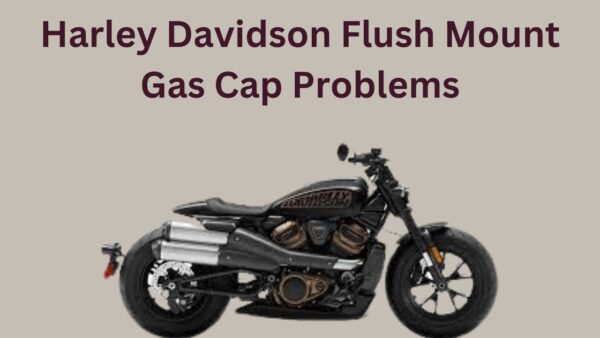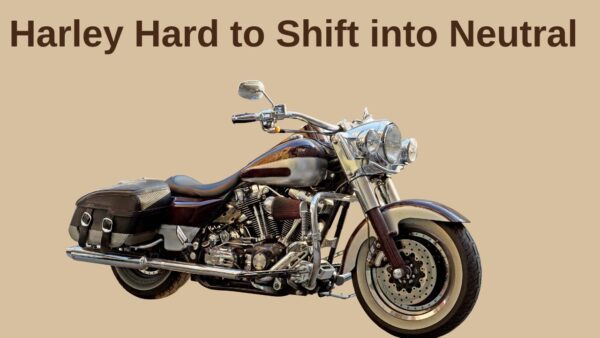
The Honda ST series is one of the most popular touring bikes. But like other brands and motorbikes, these bikes also have some drawbacks and recalls due to some issues.
If you are curious about the ST1100 and want to know about the problems of this bike, don’t worry because today I will explain the issues of the Honda ST1100.
Let’s dive into:
An overview of Honda st1100
The ST1100 was powered by a 1,085 cc longitudinally-mounted 90-degree V4 engine—the arrangement of the engine allowed for a low centre of gravity and optimal balance.
It was liquid-cooled and delivered a robust, smooth torque curve perfect for long rides.
Unlike many motorcycles which use chain or belt drives, the ST1100 utilized a low-maintenance shaft drive system.
Which contributed to the bike’s reputation for reliability and reduced regular maintenance tasks for the rides.
Honda also equipped the ST1100 with an innovative braking system, where applying the rear brake would also partially engage the front brake.
The seating position, ergonomics, and wind protection made the ST1100 one of the most comfortable bikes of its era for both the rider and the passenger.
Faulty brake system
The braking system of a motorcycle is crucial. It ensures the rider’s safety and plays an essential role in the bike’s overall performance and responsiveness.
However, some Honda ST1100 owners have reported issues that have raised eyebrows.
Inconsistent Brake Response:
Several ST1100 riders have mentioned that the braking response sometimes is inconsistent.
This means that the brakes might respond immediately at times, while there’s a noticeable delay at other moments.
Overheating of Brake Components:
Another alarming problem is the overheating of the brake components. Continuous riding, especially in city conditions requiring frequent braking, has led to instances where brake parts become excessively hot.
Over time, this can reduce brake efficiency and even potential failure in extreme cases.
Brake Fluid Leaks:
Some owners have also observed brake fluid leaks. This compromises the braking efficiency and can be a potential fire hazard, given the right conditions.
Proper maintenance and regular check-ups ensure this Issue stays manageable.
Wear and Tear of Brake Pads:
While wear and tear are expected over time, the Honda ST1100’s brake pads tend to wear out quicker than those in comparable models.
This means more frequent replacements and increased maintenance costs for the owner.
Honda st1100 problems
These are the problems of the Honda st1100.
Defective bank angle sensor
The bank angle sensor, commonly found in motorcycles, is a safety feature designed to turn off the engine if the bike tips over.
It acts as a tilt switch that ensures that the engine cuts out in the event of a fall or a tip-over, preventing further damage or potential fire risks due to fuel spillage.
But in the early models of the Honda ST1100, spanning from 1991-1993, the bank angle sensor had a defect.
The defect could lead to premature engine cut-offs even when the bike was not tipped over. In some instances, riders reported the engine shutting off during regular rides, posing safety and performance issues.
Why was this problem significant?
An engine shutting off unexpectedly during a ride is a severe concern. Not only does it stall the motorcycle, but it also poses potential risks of accidents, especially if this happens at high speeds or in traffic.
Continually restarting an engine that shuts down frequently can also lead to other mechanical problems in the long run.
How was the problem addressed?
Honda, a reputed brand known for its commitment to safety and customer satisfaction, acknowledged the Issue.
They initiated recalls for the affected models and replaced the faulty bank angle sensors with improved ones.
Starter relay failure
The engine may not crank or start if the relay fails, even when the battery is fully charged.
Why Does The Starter Relay Fail in ST1100?
Age and Wear:
One of the most common reasons for a starter relay failure is simply the age of the component.
Many ST1100 bikes are now quite old; it’s not uncommon for parts to wear out and require replacement.
Electrical Issues:
Another frequent cause of failure is a short circuit or other electrical Issues. It can be due to a faulty wire or connection leading to the relay.
Corrosion:
The relay’s contacts can become corrupted over time, especially in humid or salty environments.
Corrosion can prevent the relay from making a solid connection and stop the starting process.
Faulty Installation:
If the starter relay has been replaced before and needs to be done correctly, it can lead to premature failure.
Symptoms of Starter Relay Failure in Honda ST1100:
No Engine Crank:
The most obvious sign is when the engine doesn’t crank despite a charged battery.
Clicking Sound:
You might hear a single click or a series of them when trying to start the bike. It indicates that the relay is trying to work but can’t complete the circuit.
Intermittent Starting:
The bike might start on some occasions and fail on others. This intermittent behaviour is a hallmark of a relay on its way out.
How to fix the Issue:
To address the starter relay problem, the best approach is to replace the component if you’re comfortable with essential motorcycle maintenance.
Otherwise, it’s advisable to take your ST1100 to a professional mechanic to ensure the relay is replaced correctly.
Exhaust corrosion
While the ST1100 is renowned for its durability, its exhaust system, like many motorcycles, is vulnerable to rust and deterioration when not adequately cared for.
What Causes Exhaust Corrosion?
Environmental Factors:
Exposure to extreme weather conditions, primarily moisture and salt-laden air, can accelerate the rusting process. It is particularly in coastal areas or regions that witness frequent rainfall.
Infrequent Usage:
Motorcycles that are not used often and remain stationary for extended periods can also exhibit corrosion due to stagnant moisture that can build up in the exhaust system.
Material Quality
While Honda is renowned for its quality, no material is immune to wear and tear. Over time, the metallic components of the exhaust system can degrade, making them more susceptible to corrosion.
Lack of Maintenance:
Regular maintenance can ward off a multitude of problems, including corrosion.
If the exhaust system is not cleaned and inspected periodically, it can eventually develop rust spots.
The corrosion that affects the efficiency of the exhaust system may decrease. A corroded exhaust can lead to reduced performance, altered exhaust notes, and potential leaks.
In extreme cases, pieces of the corroded exhaust could break off, posing a safety hazard.
Swingarm corrosion
Swingarm corrosion, as the name suggests, is the deterioration of the swingarm due to various environmental factors.
The swingarm, which connects the motorcycle’s chassis to the rear wheel, is essential to the bike’s suspension system.
Related: Honda ST 1300 Problems
Therefore, any damage or wear to this component can severely impact the bike’s overall performance.
Several factors can lead to swingarm corrosion in bikes:
Exposure to Elements:
Continuous exposure to rain, road salt, and other environmental contaminants can accelerate corrosion.
Poor Maintenance:
Failing to clean and maintain the swingarm periodically can accumulate dirt and moisture, acting as catalysts for rusting.
Factory Coating Wear:
Over time, the protective layer on the swingarm may wear off, making it more susceptible to corrosion.
Corroded swingarms can pose several challenges:
Reduced Structural Integrity:
As the corrosion progresses, the swingarm can weaken, reducing its ability to handle the bike’s weight and vibrations, leading to unexpected failures during rides.
Decreased Ride Comfort:
A compromised swingarm can negatively affect the motorcycle’s suspension dynamics, resulting in a less comfortable ride.
Reduced Resale Value:
Visible corrosion can significantly reduce the motorcycle’s market value.
Prevention and Solutions
The best way to tackle swingarm corrosion is to prevent it from happening in the first place. Here are some steps you can take:
Regular Maintenance:
Clean your ST1100 frequently, especially after rides in rainy conditions or on salted roads.
Inspections:
Periodically inspect the swingarm for signs of wear or rust. Early detection can prevent more severe damage down the road.
Protective Coatings:
Consider adding a protective layer or coating to the swingarm. It can offer an added layer of defence against corrosion.
If your ST1100’s swingarm shows signs of corrosion, consult a mechanic or consider a replacement.
Worn steering head bearings
Steering head bearings play a pivotal role in the operation of any motorcycle. They are integral components that ensure the handlebar and front fork turn smoothly.
When these bearings wear out on then the following can occur:
Impaired Handling:
A motorcycle’s responsiveness is vital for safety and comfort. Worn bearings can result in stiff or notchy steering, making it more challenging to control the bike, especially during slow-speed manoeuvres.
Noise and Vibration:
As the bearings deteriorate, they can produce a rumbling noise or cause vibrations felt through the handlebars. It can disconcert the rider and even reduce the overall riding pleasure.
Increased Wear on Other Components:
If the problem is left unnoticeable, it can increase wear on the forks and other parts of the steering mechanism. In the long run, it can result in additional repair costs.
Safety Concerns:
While the initial symptoms might seem minor, if the bearings are severely worn out or damaged, they can compromise the bike’s stability. It’s essential to address this problem promptly to ensure your safety on the road.
Low mileage
While the bike was generally praised for its performance, comfort, and reliability, some riders reported the low mileage issue.
Various factors could contribute to this, such as age-related wear, malfunctioning fuel injection systems, or problems with the air/fuel mixture.
Regular maintenance, timely oil changes, and ensuring clean fuel and air filters can alleviate some of these concerns.
FAQ
Is the Honda ST1100 reliable?
The Honda ST1100 is known for its durability and reliability, often achieving high mileage with routine maintenance.
Its build quality and engineering make it a trusted choice among touring enthusiasts.
Is the Honda ST1100 a good motorcycle?
The Honda ST1100 is renowned for its comfort, stability, and long-distance capabilities.
Its reliable V4 engine and balanced design make it a favourite among touring enthusiasts. Its reputation for dependability and smooth performance makes the ST1100 a commendable choice in the motorcycle world.
What is the range of the Honda ST1100?
The Honda ST1100, with its 28-litre fuel tank and efficient V4 engine, can achieve a range of over 300 miles (480 km) on a single fill, depending on riding conditions.
How long do Honda motorcycle engines last?
Honda motorcycle engines are renowned for their durability and longevity. With regular maintenance, many Honda engines can exceed 100,000 miles.
Factors like riding style, environment, and consistent upkeep affect engine lifespan. Some models, especially touring bikes, are known to reach several hundred thousand miles with proper care.
Wrapping UP
This article helps you discover the problems of the Honda St 1100, which the owners have reported.
There are a few common problems that the Honda st1100 have reported over time. The issues included the faulty brake system and defective bank angle system.
Many of these owners fixed the issues with their Honda at 1100 on their own, but some of the owners needed the help of professional mechanics.
You may also love to read this!
Kawasaki Voyager 1700 Problems
Harley Davidson Ultra Classic Problems
2006 Dyna Super Glide Problems

Ahtsham Younas is a passionate blogger and content writer. He loves to ride motorcycles and learn the mechanical process behind the motorcycles.
He has been writing articles in the motorcycle industry since 2019 and has learned many things about motorbike niches.


